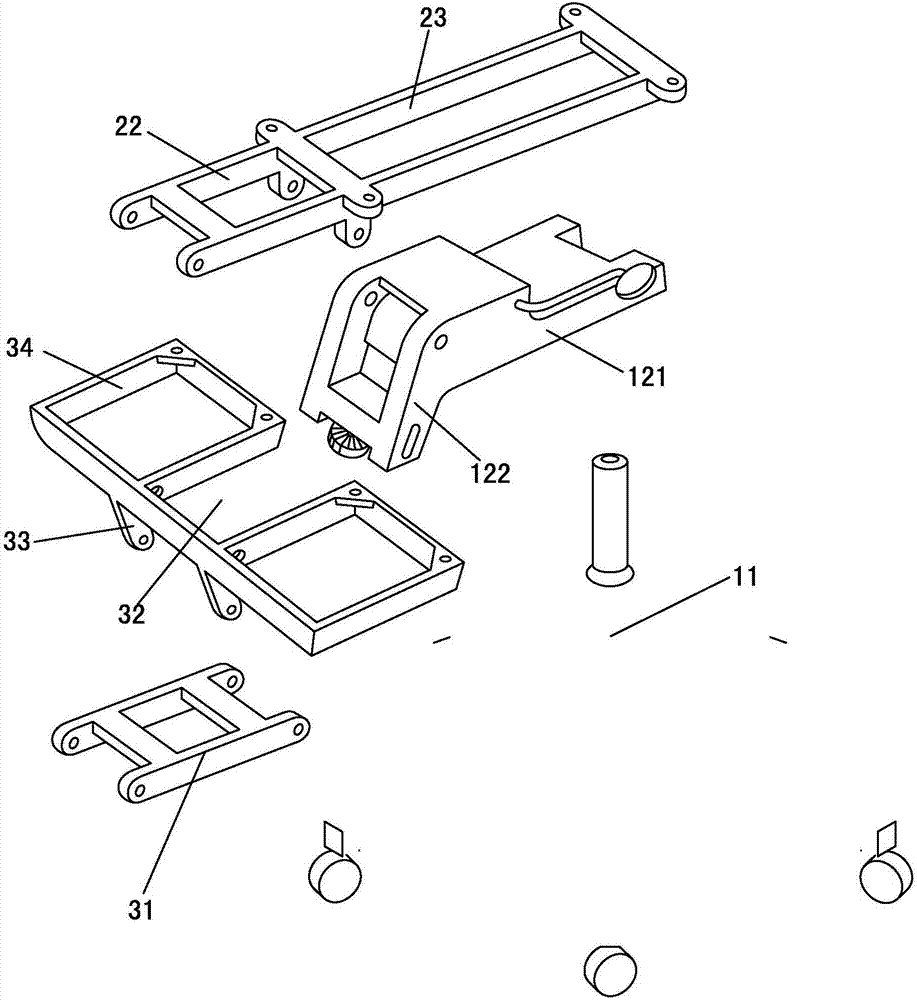Multifunctional balance chair
A multifunctional and balanced technology, applied in the field of balance chairs, can solve problems such as discomfort for the sitter
- Summary
- Abstract
- Description
- Claims
- Application Information
AI Technical Summary
Problems solved by technology
Method used
Image
Examples
Embodiment 1
[0040] Please check Figure 1 to Figure 3 , a multifunctional balance chair, including a support part 10, a seat part 20 and a kneeling pad part 30, the seat part 20 can be rotatably connected to the support part 10 and can control the seat part 20 and the horizontal plane through the relative movement of the seat part 20 The kneeling pad part 30 can be rotatably connected to the seat part 20 and is connected to the support part 10 through the connecting mechanism, and the kneeling pad part 30 can be aligned between the position of the seat part 20 and the position of the kneeling cushion of the balance chair. The movement of the seat part 20 is linked with the movement of the kneeling pad part 30, so that the inclination angles of the kneeling pad part 30 and the seat part 20 are synchronously changed in opposite directions, and if the seat part 20 is tilted forward 30 "~40" angle lock complete change.
[0041] like figure 2 As shown, the kneeling pad part 30 is in a posit...
Embodiment 2
[0049] Please check Figure 4 to Figure 5 , it differs from the first embodiment in that: the support part 10 includes a herringbone leg 13 and a V-shaped seat 14, and the two open ends of the V-shaped seat 14 are respectively fixed on the upper part of the two legs of the herringbone leg 13; also Including a telescopic mechanism 70, one end of the telescopic mechanism 70 can be rotatably connected to the V-shaped seat 14 of the support part 10, and the other end can be rotatably connected to the rear support arm 25 fixed at the rear of the seat part 20. The telescopic mechanism 70 is as follows: It is a hydraulic cylinder mechanism; the other end of the synchronous connecting rod 31 is connected to the V-shaped seat 14 .
Embodiment 3
[0051] Please check Figures 6 to 8 , it differs from the first embodiment in that: the backrest 50 is provided with a second sliding rod 51 that can slide downward, and the lower end of the second sliding rod 51 can be rotatably connected to the rear of the disk body 121 fixed on the support part 10 The second rear support arm 123; the rear part of the seat cushion bridge 23 of the seat part 20 is rotatably connected to the backrest 50. The backrest 50 includes two backrest rods 52 and a backrest pad 53 fixedly connected between the two backrest rods 52. A telescopic structure is formed between the backrest rods 52 and the second sliding rod 51; the rear part of the seat cushion bridge 23 can be rotatably connected 52 on the backrest bar. Preferably, the backrest bar protrudes from the lower part of the backrest pad 53 .
[0052] According to requirements, a first locking mechanism is provided between the seat portion 20 and the supporting portion 1 (such as the tray body 1...
PUM
 Login to View More
Login to View More Abstract
Description
Claims
Application Information
 Login to View More
Login to View More - R&D
- Intellectual Property
- Life Sciences
- Materials
- Tech Scout
- Unparalleled Data Quality
- Higher Quality Content
- 60% Fewer Hallucinations
Browse by: Latest US Patents, China's latest patents, Technical Efficacy Thesaurus, Application Domain, Technology Topic, Popular Technical Reports.
© 2025 PatSnap. All rights reserved.Legal|Privacy policy|Modern Slavery Act Transparency Statement|Sitemap|About US| Contact US: help@patsnap.com



